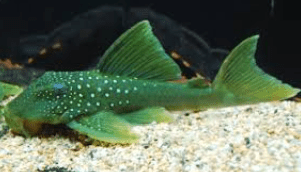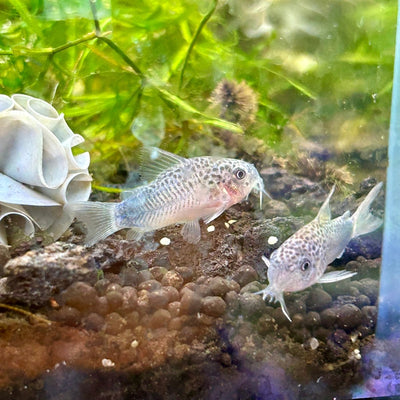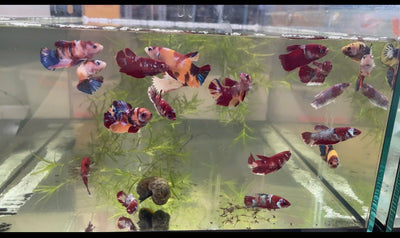Cory Catfish are peaceful, easy to care for fish that are enjoyed by aquarists of all skill levels.
Cory Catfish (also known as Corydoras, Cory Cats and Armored Catfish) are one of the most popular species in freshwater fish keeping.
Natural Habitat
Cory Catfish are known to thrive on live plants and other hiding places, so try to recreate that as best you can.
Some other things to note about the natural habitat of Cory Catfish are that they are more comfortable with sand than gravel (rock).
Shouldn't use gravel or other rough substrates as they tend to damage the body of Cory Catfish.
Personality
They live on the bottom and like to hide or rest during the day, but will forage with other fish at night. They are only seen leaving the bottom of the tank when they come to the surface for air.
The adapted gut lining means they can take in oxygen from the atmosphere. This behaviour is adapted to enable them to survive in waters with lower oxygen levels but they will still do this occasionally even in good conditions.
If this behaviour happens frequently, planting plants or air stones can provide them with extra oxygen.
They are an extremely social fish and should be kept in groups of 5 or more – watching Corydoras interact with each other is unlike any other fish.
However, some species are venomous and if highly stressed they can produce toxins that can kill everything in the tank. This means they should be self-transported and removed from the tank if they show signs of stress and quickly placed into quarantine.
Lifespan
In the wild, Cory Catfish live for 5-7 years. In captivity, Cory Catfish can live longer.
In the right conditions, Cory Catfish can live up to 12-15 years. There have even been cases of Corys living up to 20 years.
Size
Corydoras are quite small for Catfish standards. Generally, sizes range from 4-7 cm (1.5 – 2.5 inches) depending on the species.
That said, breeding females can reach up to 7.62 cm (3 inches)
Caring for Cory Catfish
These fish need a suitable habitat to thrive. It needs to be cleaned weekly, such as removing excess waste from the gravel and cleaning the tank glass. They often hide during cleaning but will emerge once the tank is cleaned. When cleaning, try not to overstress them as they will secrete toxins that can kill other species.
Change 20% of the water each week. Be sure to dechlorinate the new water and change the water slowly as disturbing the substrate.

Raising Cory catfish (Corydoras) properly is pretty rewarding—they're peaceful, social, and great for community tanks. Here’s a solid guide to keeping them happy and healthy:
🐟 Tank Setup
1. Tank Size:
Tank Size: Corydoras are small fish. Technically, a single Corydoras will only need a 10 gallon (37.8 liter) tank. Unfortunately, Corydoras are not happy alone, they need to be housed with 5 or more other Corydoras. For a tank of 5 Corydoras, a 20 gallon (75.7 liter) tank is the minimum.
-
Minimum: 10-20 gallons for a small group (6+ Corys).
-
Larger is better—Corys love space to roam.
2. Substrate:
-
Soft sand is ideal (prevents barbel damage). Avoid sharp gravel.
Unlike most freshwater fish, Corydoras are not suited to gravel – the jagged edges can damage their fins and stomachs.
Sand – the best choice when it comes to keeping Corydoras. Soft sand will not damage the Corydoras’ antennae. Choose a “sunset” yellow sand to help keep the tank looking less dirty.
While sand is definitely the best choice, it does cause problems with live plants. Sand has a low CEC (Cation Exchange Capacity) – so the roots are needed to provide your plants with the proper nutrients.

3. Plants & Decor:
-
Provide live or silk plants, driftwood, and hiding spots.
-
They like shaded areas and cozy corners.
Corydoras are not picky about plants – in fact, any will do. Some examples include: Anubias Nana, Java fern, Crypts, Hornwort, java moss are aquatic plants that do not require much light or pristine water conditions.
In addition to plants, Corydoras love to hide in driftwood and slate shelves. Feel free to be creative with your layout and placement
4. Filtration & Flow:
-
Gentle filtration—Corys don’t like strong currents.
-
Sponge filters or a filter with an adjustable flow is ideal.
🌡️ Water Parameters
-
Temperature: 72–78°F (22–26°C)
-
pH: 6.0–7.5
-
Hardness: Soft to moderately hard (2–12 dGH)
-
Keep water clean and stable—do weekly 25–30% water changes.
🧂 Tank Mates
-
Peaceful community fish (e.g., tetras, rasboras, guppies, dwarf gouramis).
-
Avoid aggressive or large predators.
-
Always keep Corys in groups of 5 or more—they’re social!
🍽️ Feeding

-
Diet: Omnivorous scavengers, but don’t just feed them leftovers!
-
Offer a mix:
-
Sinking pellets (specially for bottom feeders)
-
Frozen/live food (bloodworms, brine shrimp, daphnia)
-
Blanched veggies (zucchini, cucumber occasionally)
-
Feed once or twice a day. Remove uneaten food after a few hours to keep water clean.
🐣 Breeding (if you’re up for it)
-
Condition with high-protein foods (bloodworms, etc.).
-
Simulate rainy season:
-
Do a water change with slightly cooler water.
-
Drop temp by 2–3°F temporarily.
-
-
Look for T-shaped mating behavior.
-
Eggs will be stuck on glass/plants—move them to a breeder box or separate tank to prevent predation.
✅ Bonus Tips
-
Avoid copper-based meds—Corys are sensitive to copper.
-
Watch for barbel erosion (often caused by poor substrate or water quality).
-
Keep the tank well-oxygenated—they gulp air at the surface occasionally.






